T.R. Robinson's Blog, page 34
December 20, 2016
Who Do Authors Write For?
It would seem many authors and writers (authors to the extent they are authoring a product) forget they are not generally writing for themselves. Having said that, it has to be [image error]acknowledged there are a variety of different takes on the topic e.g. some feel it is only correct to write what they want without consideration of others; others say writing should be entirely geared toward the anticipated audience even compromising upon content to satisfy them; others suggest an amalgam of styles. Of course, in varying circumstances any of these, or a combination, may be appropriate. Nevertheless, this post is intended to be pragmatic and realistic.
When anyone writes, author or not, it is usually for others to read whether it be a book, letter, article, post etc. Consequently, authors/writers need to consider, phrase and frame their writing from the readers’ perspective. It is very easy for them to get so caught up in what they are doing as to forget who they are putting pen to paper/fingers to keyboard for. This, for the readers at least, can often lead to uninteresting, dry and irrelevant commentary and dialogue which will do no one any favours. Fundamental to authorship, which is what is primarily being discussed here, is the desire for others to read the end product. The author who writes purely for their own entertainment is truly a rarity, an inspiration and a challenge to most.
Despite the above comments and observations, when it comes to books, though other forms of writing may be included, all should, at least in principle, be writing because it is what they want to do and not because they seek fame or wealth. Naturally most authors would love their books to become bestsellers but to only write with that motivation can lead to distorted, poor quality publications. Make no mistake, readers, on the whole, are not ignorant, foolish people; they will quickly note when something is below par. Nevertheless, despite all that has been said, it must be acknowledged, as a general rule, authors want their books to sell; scriptwriters want agents, producers and directors to take up their ideas; newspaper and magazine columnists want their articles read; letter writers want the recipient to comprehend all they have to say; etc. Consequently, though they may be writing out of a genuine desire to do so, most will also, inevitably, seek to formulate their writing to achieve their aim.
Regrettably there are books where it is clear the author has got caught up in their own thoughts. They understand what they are writing and expect their readers to have the same comprehension without giving thought to whether they have the same background knowledge or experience. It is really easy for authors to fall into this trap; to get carried away with what they know forgetting others will be approaching the work with different perspectives, knowledge and experience. People’s comprehension of a phrase, idea, concept or word is frequently subject to their background; social, cultural, national, religious. However, it would be a minefield to try and take in all the various possibilities. Overall, authors and writers should constrain themselves to writing within their own national understanding. It is more than likely, if a reader has chosen their book, they are either from the same national or cultural background or have a good comprehension of it.
Now to the nitty-gritty of the subject. It is not easy for an author to step back from their ‘baby’ and view it from an others perspective. Most just want to get on with ‘their’ writing and not be bothered by such distractions. Some may even be so arrogant as to consider the requirement to consider others, primarily the reader, trivial; hopefully those who think like that are a minority.
So what does it take to write for readers?
Research what readers want, whether it be in books, films, blogs or even letters.
Consider the reader’s background, if possible.
Authors should be aware of how things they read impact upon them; what they like and what they do not and why. They need to learn from this.
Erase or limit superfluous words, phrases and descriptions, which may make sense to them and their circle of acquaintances but are not in wide popular use.
Treat readers with respect: give them credit for being intelligent individuals.
If the writing is specific, bear in mind the age, and as far as they can know it, the knowledge and experience of the people they are writing for.
Avoid narrative or dialogue that talks ‘down’ to the reader.
These are just a few thoughts. No doubt readers of this post will think of other aspects that should or need to be considered.
One observation, regarding fictional works in particular, though the point may be extended to other genre. A book will distinctly benefit if the author is able to view the story as a film in their head. Characters, dialogue, scenery, etc. can all be based upon what they see and as a consequence may be more discernible for the reader. This is not something all writers find easy, though most, if they relax, are able to gain something from such vibrant imaginings.
The crux of the matter is simple: authors and writers should make time to stand back from their writing and take an objective view, endeavouring to see it as a reader will. If they really find they cannot do this, they should get a friend, acquaintance, editor (if they have one) or a reader to have a look. If they do not have anyone they could try asking their ‘friends’ and contacts on social media, perhaps somewhere like Goodreads. There are usually several people willing to participate in, and assist with, such ‘beta’ reading i.e. this is similar to testing a new on-line sites and systems but of course, in this instance limited to reading.
Naturally, as with anything, there are exceptions to the general rule. Some tales and stories need to be told in the author’s own style. The work may not become popular but it has to be acknowledged many interesting works would have been missed if some authors had not the courage and determination to write in the style they considered most suited their work e.g. James Joyce; William Faulkner, Jack Kerouac; etc. Sometimes a story has to be told in an individual style.
Whatever the circumstance, and no matter the style adopted, authors need to remember who they are writing for. They must avoid tunnel vision and accept, in most cases, they are not primarily writing for themselves.


December 16, 2016
Here We Are & There We Go by Jill Dobbe
[image error]Due to the nature and layout of this book I have taken the uncommon step of reviewing it section by section. Consequently, this is a slightly longer than normal review.
As frequently mentioned, reading, unless of technical or scientific material, is a subjective experience. Consequently, a reviewer’s comments and observations tend to reflect how the account/story impacted upon them personally as opposed to it being an objective technical exegesis.
‘Here We Are & There We Go’ is a personal account of the author’s experiences whilst, together with her husband and children, on teaching assignments in a variety of countries. During the reading of this tale you may well agree with some of their relatives, who thought them crazy to undertake such a lifestyle with their two young children; one and two years old at the start.
In the prologue Jill Dobbe effectively shares how, having been born and brought up in a provincial town, she has a desire to travel and see the world; the reader will find themselves empathising with her. However, before she can put any of her plans into practice she marries her soulmate and has two young children. Fortunately, her husband turns out to have similar desires and with both of them feeling restless, they ultimately venture out into overseas teaching assignments: both are qualified teachers.
Before continuing, a personal note: I confess to being a little disappointed. Having travelled fairly extensively I anticipated reading detailed accounts of landscapes, architecture, culture, history, social conditions and lifestyles of indigenous people in countries I had not visited. Though there is some of this in places it is limited. The tale is primarily, and was intended to be, about the family themselves. I had obviously taken the wrong approach and once realised undertook a second speed read through the story. Having set aside my preconception I was able to enjoy this account of a family’s adventures and experiences.
Their adventures commence on the island of Guam in the Pacific and moves to Singapore. In these chapters the reader is taken from occurrence to occurrence in quick succession. There are some descriptions of how local inhabitants celebrate certain events; what is considered bad mannered; and how daily life, such as shopping, was conducted. Nevertheless, it would have been nice to treat the reader to more details about the places themselves. For example, Singapore and adjoining Malaya have much to see and enjoy. Tiger Balm Gardens, in Singapore, are mentioned but no description of this unusual and intriguing place is given. There is also a quick reference to ‘exotic’ flowers but no mention of the myriad of different and wonderful orchids which are grown and cultivated in the area. But, as previously mentioned, the reader must bear in mind this is primarily an account of the family’s ‘personal’ experiences.
The third chapter, containing an account of the family’s five year stay in Ghana, Africa is very different and absorbing. It quickly becomes apparent they loved being there and the reader has a greater sense of involvement as the author shares their enthusiasm for the country and culture. How the scenery takes the breath away and how the locals deal, fairly or unfairly, with perceived wrong doing are but a couple of the qualities that come through.
The next chapter deals with the family’s stay in Mexico, which they choose on this occasion because it meant a less arduous journey to and from their home in Wisconsin. No longer would they endure twenty-four hour flights and could in fact drive to and from their home. It was also nice, as Jill points out, they were in the same hemisphere and consequently did not have to get up in the middle of the night to telephone their relatives at a reasonable hour for them.
The fifth chapter is very interesting as it highlights a condition few would have contemplated: ‘Reverse Culture Shock’. The family had been away from the United States for so long the children really had little idea of what life there was like and their parents had virtually forgotten. Jill Dobbe’s description of this reverse culture shock creates a feel for what they were undergoing. It, honestly, shows how easy it is to be quickly drawn into what is considered acceptable and necessary for life, whereas in fact many of the so called ‘necessities’ are nothing of the sort. She compares how they lived life without these items in foreign countries and got on well enough, even though it was uncomfortable at times. Certainly anyone who is contemplating, or has undertaken, such a life would do well to read this chapter before attempting to return to and resettle in their homeland no matter where that may be; the principles apply in general to all life styles, cultures and societies.
Besides recording experiences in the countries they stayed in the book contains additional information regarding journey stopovers. These are shared in chronological order though it may have been easier, for the reader, if they had been collated into a separate chapter.
As mentioned some relatives thought Jill and her husband crazy and irresponsible for taking their children into such an adventures life. Several could not even comprehend their desire to live in foreign countries, especially those not having the facilities they took for granted. This tends to be the general attitude of those who have lived in rural and provincial locations all their lives. Nonetheless, it should be acknowledged, difficult as it may have been, by enduring the hardships and difficulties these parents have provided their children with a broad, multicultural education and upbringing which will probably benefit them throughout their lives.
The writing style provides the reader with a sense of the author’s own voice. Should they subsequently meet her there is an intimation any conversation would simply be a continuance of the read.
For those considering a similar lifestyle this would be an interesting and informative read.
I give a three stars (3*) rating. If you are not a regular reader of my reviews, you may like to read ‘Assessing Book Review Ratings’ to understand my take on ratings.
The book is available in both paperback and e-formats:


December 13, 2016
Readers Selection Processes
[image error]Authors, especially indie (independent) ones, need some comprehension of how readers select a book. Publicity and marketing for all authors, no matter how published, is a challenge, especially in these days when hundreds of thousands of books are being independently published. Consequently, any information that may help target readers is invaluable.
Before continuing there is one very important discovery indie authors really need to take on board: The majority of readers still prefer physical books. Most indie authors have difficulty getting an agent or traditional publisher and therefore, by default, have to primarily rely on the internet for the publishing, publicising and marketing of their books This can become an all absorbing task and it is easy to forget there still remains a very large proportion of readers who are not digitally inclined. I know several people who have absolutely no on-line activity. May be hard to believe in these days of digital everything: tablets, smartphones, PCs etc. but it is a fact.
Some statistics
Please Note: The majority of the following information is based upon the investigation of American readers’ habits. Nevertheless, the principles probably apply generally across the globe.
Only 73% of people read.
Only 40% read print books.
Only 6% read digitally. (This statistic is one indie authors really need to take note of.)
Statistics from a different source
In the last year; 2015-2016:
65% have read print books.
28% have read e-books.
14% have listened to audiobooks.
What may we glean from this information? = Print remains favourite!
Authors should not allow this to discourage them too much but do need to be aware their on-line target audiences, most of whom probably primarily read digitally, form but a small part of the overall available readership. That does not mean they should give up.
To facilitate those who have a preference for physical books, indie authors should avail themselves of the POD (Print-On-Demand) facility some self-publishing platforms provide e.g. Createspace. However, they should bear in mind many such readers still appear to prefer purchasing books from bricks and mortar book shops. But it never hurts to have a book available in as many formats as possible, especially when most of it may be achieved for free. And of course, as some will point out, there is a steady decline in the availability of bricks and mortar book shops forcing many to purchase on-line. This includes physical books.
Genres
Top fiction genres: (1) Romance; (2) Erotica; (3) Young Adult and Teen; (4) Fantasy; (5) Mystery and Detective (In view of the popularity of television detective shows, surprising ‘Detective’ is not higher up.); (6) Gay and Lesbian; (7) Science Fiction; (8) Historical; (9) Thriller and Suspense (Another surprise); (10) Adventure.
Top non-fiction genres: (1) Biography; (2) Health, Wellbeing and Medicine; (3) Business and Economics; (4) Self-Improvement; (5) Religion and Spirituality; (6) Relationship and Family; (7) Sports and Outdoor Recreation; (8) Education and Study Guides; (9) New Age; (10) Computer and Internet (In these days of increasing internet activity, surprising ‘Internet’ falls in this last category. Perhaps, most now consider themselves sufficiently knowledgeable not to need to read up further.).
Selling Techniques
Pre-Orders:
In the last year or so there has been an increasing amount published about the ‘pre-order’ facility most on-line retailers now offer. Those who have availed themselves of this option appear to find it very successful for the marketing of their books. The statistics are certainly impressive. Apparently 2/3rds of the top 200 selling books were launched as pre-orders. There is also indication these authors earn approximately three and a half times more than those who have not utilised the option. Evidently this is a facility/option indie authors need to seriously consider.
Free:
In the early days of self-publishing giving ‘free’ books proved an effective means for gaining new readers; they were probably reluctant to pay for books by new unknown authors. Subsequently however, the ‘free’ option seems to be having considerably less impact. The debate regarding whether authors should or should not follow this path has raged across all social media for some time. Last year (2015), there were, apparently, 39 more downloads of free books compared to those for priced ones. This is markedly down from previous years: 91 in 2013; 100 in 2012. The primary area where free books still seem to have some success is with the ‘series’ collections, where the first is often given free as an encouragement to purchase the rest. These apparently gained 66% more downloads compared to those for one-off, standalone, books. As said the concept of giving free books is constantly under debate with some authors stating they continue to find the ‘free’ option works well for them. One even suggested they gained approximately ten sells for every free book. In the end it has to be the individual author’s decision whether to offer their books for free.
Book Length:
Apparently longer books sell better than shorter ones. However, this probably needs to be balanced by taking into account the increasing popularity of tablets and smartphones for reading. Commuters, of which there are an increasing amount, particularly favour these methods. Shorter books are more suited to these devices, especially smartphones. Nevertheless, the statistic indicates many readers remain interested in good quality, full length tales. Caveat: The comparison of sells between longer books and shorter ones may have been distorted by multiple-author boxsets.
Pricing
Again this is a topic that has been and is constantly under discussion.
$3.99 – appears to be the most successful price for full length fiction.
$0.99 – it is suggested this is similar to the ‘free’ option; designed to attract new readers.
$1.99 – common advice is to AVOID this price tag. No one is sure why reader’s do not like it but the facts support the notion they do not. If your book is priced at $1.99 you are strongly advised to change to the more successful $2.99 or $3.99 or, if your primary aim is to gain new readers, $0.99.
On-line Presence
All authors need to be able to communicate with their readers in a meaningful way and not just ‘push’ their books. In past years contact with readers was not such an issue however, today more and more of them like to know about the author as a person as well as about their books. Naturally, a side effect of ‘chatting’ with people generally is, hopefully, they will become interested in the authors writing.
Conclusion
Remember, overall, a high percentage of readers still prefer print books.
If your genre is one of the less popular you need to think of how to draw greater attention. This may be in any number of different ways e.g.; engaging social media posts; enhanced, appealing synopsis and blurbs; participating in relevant or at least related, forum discussions; highlighting aspects that would be of particular interest to the targeted audience; etc.
Price your book, if you have decided not to give it free, at one of the optimum price ranges.
Seriously consider the pre-order option.
Ensure you have an adequate social media presence.
Sources:
2015 survey by Smashwords.*
Recent PRC survey.
Individual comments and observations in LinkedIn discussions.
*Note: Smashwords distributes to a number of retailers however, Amazon, though included, forms a very small part of the sales that show up in their statistics. This means books in the KDP Select programme are not included in the figures. Most, but not all, Smashwords statistical sells are made through iBooks and Barnes and Noble. Though Amazon is the world’s largest on-line retailer and consequently, statistics from them need to be seriously considered, it is worthwhile gaining insight from other sources and points of view, thereby providing a more balanced perspective.


December 9, 2016
Cherie Magnus – Interview
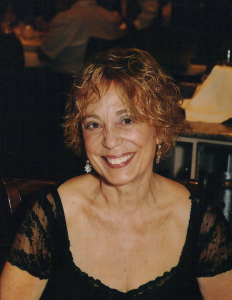
Welcome Cherie Magnus
Church of Tango and
Arabesque
(You will find links to both books at the end of this post.)
Please tell us a little about yourself.
Born and raised in Los Angeles, I’ve been a dancer all of my life, while working at my day job as a reference librarian at the Los Angeles Public Library. After raising four sons, my husband died of cancer when he was only 54. I was devastated, and struck out to live in other countries on a mission of survival. Throughout everything I continued to write, a life-long pursuit.
What first inspired you to write?
Probably my love of reading from a very early age. I remember writing my first “book” when I was eight years old, plus numerous poems. Then when my father bought a typewriter, I really felt professional. For my junior high graduation, I received a pink portable Royal typewriter that I used for twenty years. I was singled out in all my writing classes, which made me want to pursue writing for publication.
In what genre(s) do you prefer to write?
My favourite genre is the personal and/or critical essay. I was a dance reviewer for many years for a newspaper in Los Angeles, and I adored that job. Not only did I get great house seats for all dance performances, but I knew my review would be published and read. I consider reviews a form of education—helping audiences to understand more about what they see. The personal essay was the form I used during the eight years I wrote my blog about tango and life as an expat in Buenos Aires.
As I lived the life of The Church of Tango, I couldn’t believe all the things that were happening to me and early on I thought that decade would make a good book. Memoir is more than memories of the past, what can make it rich is the reflection that comes years later. Otherwise a so-called memoir is just a diary.
Are you working on another book?
My next project is the sequel to The Church of Tango. I’ve had many requests for what happened after I settled in Buenos Aires with my cat. My problem in writing it is that I have to reveal many personal details about my Argentine partner during the ten years we were together in Argentina, and now the relationship continues even though I moved back to Los Angeles in 2014. He doesn’t speak English and is a dancer not a reader anyway, but he is very well known in the world of tango. People would love reading the juicy details that make the story interesting, but I have no wish to damage his reputation or hurt his feelings. The intimate details of any relationship are always interesting to outsiders, even if they are not about anything particularly horrible or sensational. So I’m having problems with getting going on this, the third in my series of memoirs.
Your books have obviously required research. What do you consider the best resources?
All my life as a dancer, my day job has been that of a professional librarian in the public library. So all resources have been at my fingertips. For Arabesque I needed to check on details of 1960—dates of world events, popular songs, books, movies.
For The Church of Tango, I took notes as I lived those years of tragedy and loss, but when I needed to know something specific—dates of an art exhibit in Paris, locations, I consulted Google.
Do you consider your books convey messages to readers?
I hope so. Memoirs are usually read because the writer is someone famous who the reader is curious about.
For unknowns, there must be something special about that person’s story. Before I wrote The Church of Tango, I read many memoirs of women who lost their husbands, who had cancer, who moved to foreign countries for financial reasons, who lost their homes and all of their belongings. But they all seemed whiney to me. I wanted to show how all of these difficulties could be survived, and even take one to a new life that while not like the old one that was lost, still contained joy, purpose, and love. Even for women of a “certain age.”
Don’t give up, I wanted to say. Find something that will carry you through the tragedies of life. For me, it was dance. You just need one thing that you are passionate about to keep you going.
In the prequel, Arabesque, the theme was that while life may not turn out as you had planned, it can be just as good—which I guess is also the theme of The Church of Tango. I also wanted to paint a picture of life as a UCLA student in 1960—how different university life and the whole world was back then before the Beatles, before the Pill, before the assassination of JFK, before Civil Rights.
What advice would you give to authors who are just starting out?
Write what you want to say, not what you think will sell.
Biographies, autobiographies, memoirs: What advice would you give, about using real names and descriptions, to authors who write in this genre? I ask because many raise concerns about the issue.
The main point of a memoir is that it is TRUE. That is the reason for its value and why the reader is interested. So in my opinion, changing names is ok but altering facts is not. In my memoirs, I only changed the names of a few negative characters with some exceptions.
I did have an experience though at a reading/signing of The Church of Tango where one of the characters was in attendance. I had changed his name because he is a well-known musician and I didn’t want him to feel his privacy was invaded. But his feelings were hurt that I gave him a different name in my story. I wished I had asked him. That would be the best policy: ask if possible if someone in your story would prefer their name to be changed.
Do you self-edit or do you think a book should only be professionally edited?
Of course I self-edit, but when I get it as good as I can, then I turn it over to a professional. I think it is mandatory to have your self-published book professionally edited. After writing and reading your own work ad-infinitum, you can no longer see errors in logic, spelling, grammar, transitions, backstory. A reader will not put up with these negative factors and after being assaulted for a few pages with them, will quit reading. And a reviewer probably won’t read more than two pages of a badly edited book.
I found my wonderful editor in my own writers group. After hearing her incisive comments on my and other members work, and hearing her read her own writing, I knew she understood the basics of a good book. She also has impressive credits as well as a professional website. I wouldn’t trust just anyone to do such an important job.
How do you go about marketing your books?
I’m ashamed to say that like most writers, marketing is my bête-noire. After each book was published, I did my best with no budget at all. I have a blog, I have a Facebook page for each book, I listed them on various websites, and entered contests, a couple of which The Church of Tango won. I offered promotions, and for a limited time gave away free e-copies on Amazon.
Nothing was very effective, really. What has saved me is that I’m rather well known in the tango world, and have a following.
How important do you think reviews are?
Doesn’t everyone think reviews are enormously important, even bad ones? Like the old adage, there’s no such thing as bad press. One review in an important medium is pure gold—no matter if it’s positive or negative.
If you consider reviews important, how do you go about obtaining them for your books?
It is almost impossible to get reviews in professional media for a self-published book. As a librarian, I have learned over the years to respect Kirkus reviews, but then I found out you can buy them—at quite a high price. I sent books to several sources, writers and professionals who I thought would enjoy my books, hoping for a review or at least a quote for the cover. But none of them responded.
Many readers contact me to say they’ve enjoyed my books, and I usually respond with a request to write a brief review on Amazon or Goodreads, and some do, but not all.
Do you have a preferred genre for when you read?
I like literary fiction, but lately I stick to history, biography and memoir.
This is an age old question but one I consider of interest. If you were stranded on a desert island, which three books would you like to have with you?
The Complete Works of Shakespeare
Norton Anthology of English Literature
A blank book and a pencil
Please share with us links to where readers may obtain more information and insight into who you are.
Cherie’s website: http://www.mirasolpress.com
Cherie’s Amazon page: http://www.amazon.com/Cherie-Magnus/e/B0073S5SKO/ref=dp_byline_cont_book_1
Facebook Pages:
https://www.facebook.com/tangocherie
https://www.facebook.com/arabesquememoir/
https://www.facebook.com/thechurchoftango/?fref=ts
Cherie’s Personal Blog: http://blogspot.tangocherie.com
Thank you Cherie for sharing your experiences and knowledge with us.
Cherie’s Books:
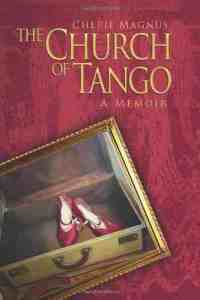
If interested you may read my review here.
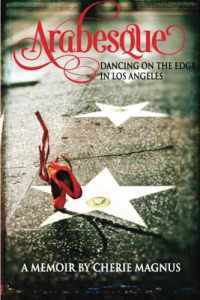


December 6, 2016
Avoiding US Tax Withholding
Self-published authors, who utilize the free publishing software provided by such  companies as Amazon and Smashwords and others, will be aware that under United States of America tax laws, 30% of US business incomes must be withheld unless appropriate documentation has been successfully submitted.
companies as Amazon and Smashwords and others, will be aware that under United States of America tax laws, 30% of US business incomes must be withheld unless appropriate documentation has been successfully submitted.
If you are a non-US citizen you may consider such a withholding does not apply to you because you do not conduct business within the US. However, you would be wrong. Though your ‘business’ (that of being an author) is based in another country, your product (book in our case) is created by and sold from a US based business e.g. Amazon, Smashwords, iBooks, Google Play Books, etc. Consequently, your ‘business’, for tax purposes, is considered to be a US based one.
Prior to recent changes you needed to submit detailed documentation and probably apply for a US Tax Identification Number to recover the 30% withholding companies were obliged to keep back from your royalty payments. Thankfully, the tax regulations have been eased, allowing authors to claim exemption under various treaty agreements. Nevertheless, it is still a fairly complicated field to manoeuvre through.
I publish all my books through Amazon (various international sites); Smashwords (which distributes to a number of retailers: iBooks, Barnes & Noble, Nook and many more including library listings); Google Play Books (they are not included in Smashwords distribution so I have my own account with them). Each of these companies is obliged to request tax information. Amazon and Google Play Books make matters a little easier by enabling such information to be submitted electronically. Smashwords requires a physical form be submitted by post.
Amazon provides a questionnaire that, overall, is reasonably easy to complete nevertheless, there are elements which need to be clearly understood. Most of us find it hard enough to understand the tax laws of our own nations let alone those of other nations and cultures. Great care must be taken when completing these exemption request forms. I understand, if rejected, it takes a very long time to sort out. Even what appears an insignificant matter may result in rejection. For example, date format: US dates are written as month, day, year whereas UK dates are presented as day, month, year. Apparently even something as simple as this can result in the form being rejected.
If you have an existing account with any of the USA based companies, you should review your tax status and consider completion of a new exemption request form. There is no obligation to submit a revised form however, if you do not, the company has no choice, legally, but to withhold thirty percent from your royalty payments. It is possible to reclaim the withheld amounts but it is a long and complicated matter. In view of the fact there are now a number of new treaties that provide for tax exemption, I advise you take time to complete a new tax form for each of the companies with whom you publish.
Though the new forms are comparatively easy to complete I, when submitting them for all my accounts, felt a need for some guidance. I was therefore very grateful to have come across the 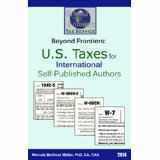 book; Beyond Frontiers: US Taxes for International Self-Published Authors by Marcela Martinez Millan.
book; Beyond Frontiers: US Taxes for International Self-Published Authors by Marcela Martinez Millan.
I cannot recommend this book highly enough. The author, a qualified tax advisor and a US Enrolled Agent that allows them to represent taxpayers, has provided a most comprehensive guide for Non-US self-published authors. She delves into all aspects whether you are publishing as an individual or corporation. Gives guidance on what you need or do not need to apply for. Explains about tax treaties and how to complete the various forms, highlighting where errors may unconsciously occur.
This resume does not do justice to the book or the advice and guidance provided. I TRULY CANNOT RECOMMENJD IT ENOUGH. To be frank, I think it is a publication all authors should avail themselves of. Within the usual book rating systems, I, without hesitation, consider this warrants five stars (5*), if not higher. The author’s generosity in sharing all the advice is further complemented by the low price £0.99 ($1.28).
The book is available as an e-book.
Disclaimer: Other than having read the book and taking advantage of the guidance provided, I am in no way associated with the author and do not know them personally.


December 2, 2016
Celia’s Secret by Martha Ashwell
This book comprises the author’s personal tale detailing her life journey throughout which she had to deal wit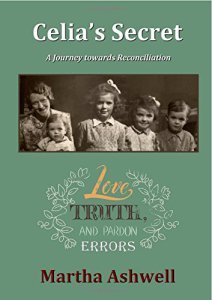 h the impact a family secret had upon her and the family as a whole. It is technically well written and right from the start we have a clear understanding of the author’s thoughts, emotions and opinions. It clearly shows how a secret can affect people, whether they know of its existence or not.
h the impact a family secret had upon her and the family as a whole. It is technically well written and right from the start we have a clear understanding of the author’s thoughts, emotions and opinions. It clearly shows how a secret can affect people, whether they know of its existence or not.
In the first half, well just over, the reader is given a detailed insight into the author’s history; upbringing, education, development, inner thoughts, questions and emotions. I understand, to make sense of the overall account, this was necessary however, to me, it primarily read as a series of facts. I did not ‘feel’ drawn in though the domestic (British) and world history backdrops are interesting. Readers of this review need to bear in mind reading is a subjective experience and therefore others may well disagree with this assessment of the first half.
Having set the background, the book changes tone and, for me at least, became far more interesting. This commences with a fuller description of the author’s mother’s life, motivations, values and social acceptances. Except for one or two instances near the end, I, from this point forward, felt drawn into, and part of, the tale. The descriptions of how the author herself as well as her relatives dealt with the situation are fresh and real. She really shows how differently people, even those related to each other, deal with the same situation. The author has also been very honest about her own condition; the secret, from her earliest days, had an insidious impact upon her leading eventually to serious depression.
Throughout the rest of the book Martha Ashwell draws upon her knowledge and experience of philosophy and counselling as well as her inherent faith and beliefs. She very generously shares her acquired insights and suggested techniques for dealing with depression and other aspects of mental health issues. These are not only very interesting in themselves but also have the added value of enlivening and making the author’s tale relevant to modern day readers. The book also depicts the challenges associated with a search for reconciliation.
As said, the author is very honest about her own condition, reconnecting her depression, sense of insecurity and uncertainties regarding her life’s future. The reader is drawn along, sharing the sensations of concern and relief as and when circumstances change one way or the other.
In many ways this is a complex, yet personal, book. It certainly will not appeal to all readers. Nevertheless, I suggest those either suffering themselves, or seeking to help those who are suffering, with depression and its related conditions would find this an insightful and helpful read. It is not a manual or text book of solutions, but has many insights, suggestions and observations that could well assist. Be assured however, though it has these elements to it, this is primarily a personal and family tale.
It will be noted little has been said about the story itself. This is intentional; so as not to spoil it for potential readers.
Assessing an overall rating was not initially straight forward. The first part inclined me toward three stars (I believe most books really fall within this range) however, the change of tone and the considerable information contained in the second part merits four. Consequently, I give an overall four stars (4*).
The book is available in paperback and as an e-book.


November 29, 2016
Editing Your Own Work
If you are a new author, you may consider ‘edit’ and ‘proofread’ to be interchangeable terms. They are not! Though there may be some overlap, in principle and action they are  very different processes. For more information on proofreading see ‘Proofreading Your Own Work’.
very different processes. For more information on proofreading see ‘Proofreading Your Own Work’.
In editing the intention is to ensure the resulting publication is cohesive; consistent; relevant; correct. These principles apply to all publications whether technical, factual or fictional. Please note: the term ‘publication’ is being used to refer to all types of printed material; a book; an article; a social media post; etc. whether physical or digital.
What components comprise the editing process?
The editor will be considering:
Cohesiveness – How well the story, information etc. holds together.
Organisation – The flow and interaction between different parts.
Chronology – Timelines, where appropriate and relevant.
Consistency – In style, presentation, language, format.
Possible modifications – Condensing, language, sharping scenes and/or action.
Overall they will be considering the plot development and flow and looking to correct/omit inconsistencies.
Editing is a far from easy undertaking and it is undoubtedly preferable to engage the services of a professional. However, they are expensive. That is not to say they do not earn their money. In most cases I believe they do. Nevertheless, a majority of independent (indie), self-publishing authors do not have the resources to meet such an expenditure. So, what are they to do?
As already stated, editing is no easy undertaking. And to edit your own work is doubly difficult. Nonetheless, most will have no option but to take the task upon themselves. Prior to commencing the process, it would help if there has been some proofreading: see ‘Proofreading Your Own Work’. This would help do away with the distraction of minor mistakes and errors. The editor needs to concentrate on the more detailed important aspects of the work.
Editing, of necessity, is a slow paced task. Unless you have an unusually perceptive eye and analytical mind, to simply rush through the text will not help. Many will tell you, when it comes to our own work, our brains have a habit of seeing what they think should be on the page i.e. the same error or misjudgement will consistently be seen as correct. To try and overcome this, as far as is possible, it will help if there has been a short break between completion of the writing and commencing the editing process. With books in particular, our minds, during the writing process, are constantly immersed in the subject detail and consequently, will continue to comprehend it in the same way unless there has been a break. Stepping away, even for a short time, allows the mind to clear.
The following is a suggested process:
Save a copy of the original manuscript in a separate file. Besides acting as a back-up it will also act as a referral document for when you make changes. It sometimes helps to be able to refer back to your original wording.
Read through the whole manuscript without interruption. Annotate where you find inconsistency, inaccuracy or anything else you consider may require amendment.
Go back through the manuscript and make such alterations as you consider relevant.
Read through the amended manuscript. You will inevitably find other elements you consider may require alteration.
Make the further alterations.
Now read chapters/sections out of order. E.g. read chapter 4 followed by 10 followed by 1 etc. This will help identify where there may be plot/scene errors. Is something happening where it should not be? Does the timeline follow? And so on.
Rewrite; reorder; alter as you see fit. To rewrite and reorder can be frustrating but must be undertaken if you want your book, article or whatever to be the best it can be.
Repeat the above processes several times.
To assist with all the rereads it will help, as with proofreading, if you use different fonts, styles, sizes, formats etc. for each read.
Editing your own work can be an endless task. It can certainly feel like it. Perseverance and patience are essential attributes for authors: writing, of any sort, is not the quick fast occupation many would like it to be. Well, not if the best possible product is to be produced.
Naturally, it would help if you can get others to read through your edited manuscript; it is a fact we are unable to spot all our own errors. Friends, colleagues, relatives, may be asked but ensure they are someone you trust to be honest. Many people find it difficult to be critical when it comes to someone they are connected with.
As said, editing is a slow process and it is easy to become impatient. After all the hours, days, months even possibly years, of preparation you want to see your work in print; physical and/or digital. However, if you really want the best you can possibly achieve, editing as well as proofreading must be undertaken.
For those who really have no one else to call upon, it can be unnerving to publish a manuscript they and only they have read through. They have to accept some minor errors and anomalies may remain, even after four or five reads. Most will agree it is possible to go on ad infinitum however, if the product is to see the light of day, a line has to be drawn somewhere. The author must make themselves stop and go ahead with publication.
One consolation, if you can call it that, is some ‘professionally’ published works still contain errors. Self-publishers also have the advantage of most self-publishing platforms providing the facility to update their work at any stage. Therefore, if an error or two are discovered after publication, it is not the end of the world. Of course amended editions should not be frequently or regularly published. The author’s reputation may be damaged if they are. If an amended edition is really required it should be held back until there is reasonable certainty most of the errors have been spotted, and corrected.
Conclusion
When commencing your project accept you will have to be patient with yourself.
Determine to persevere no matter what.
Control impatience. Though in a hurry to see the end product, you should not jump the gun.
Accept the need to proofread and edit several times.
Accept, on your own, you will not spot all errors and anomalies.
Overall, following the above processes will usually result in a reasonably good quality end product.


November 26, 2016
Angel with Drumsticks by Pamela King
Angel with Drumsticks is an unusual and interesting memoir. The synopsis (set out at the end to assist readers of this review) makes clear this account relates to the results of an ‘experiment’ authorised by the Vatican.
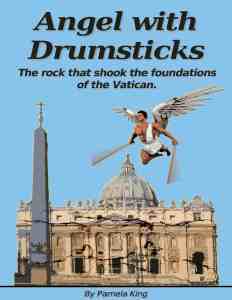 The tale basically regards how some Italian young people responded to an enterprise arising from the Vatican II council. As the book explains, the aim of the council was to: ‘make the Church more relevant to the young people, to modernise the Church and to be more welcoming to entice them to follow its spiritual path, rather than exhort them to do so.’ The reader is shown how a young music band’s countrymen acclaimed them a success and how their ‘professional’ lives changed as a result. However, as tends to occur with each new generation, there was some conflict, well at least friction, between traditionalists and the up and coming generation of young people. Nevertheless, these young men where not out to be contradictory or to undermine the Roman Catholic Church but simply wished to help and support the fulfilment of Vatican II aims. In truth they were grateful to have been asked to be part of the project ‘La Messa Dei Giovani’.
The tale basically regards how some Italian young people responded to an enterprise arising from the Vatican II council. As the book explains, the aim of the council was to: ‘make the Church more relevant to the young people, to modernise the Church and to be more welcoming to entice them to follow its spiritual path, rather than exhort them to do so.’ The reader is shown how a young music band’s countrymen acclaimed them a success and how their ‘professional’ lives changed as a result. However, as tends to occur with each new generation, there was some conflict, well at least friction, between traditionalists and the up and coming generation of young people. Nevertheless, these young men where not out to be contradictory or to undermine the Roman Catholic Church but simply wished to help and support the fulfilment of Vatican II aims. In truth they were grateful to have been asked to be part of the project ‘La Messa Dei Giovani’.
When reviewing it is best, and quite honestly only fair, to avoid the inclusion of spoilers. However, in this case the synopsis readily sets out what the book is about and indicates the consequences for the protagonists of their willing participation in a new venture.
On the surface this memoir appears to only be of interest to a limited audience e.g.:
Those interested in the decisions etc. of the Vatican II council.
People who would like to know how the conclusions of Vatican II were or were not implemented.
Critics of the Roman Catholic Church.
Vatican conspiracy enthusiasts.
Conspiracy theorists.
Historians with a particular interest in The Catholic Church.
Nevertheless, others are strongly encouraged to read it. It is not something that would normally catch my attention but, if ignored, I would have missed out on an interesting and informative read.
Evidently a lot of research has gone into the writing of this book. The historical photographs and media extracts included assist the reader by providing a fuller comprehension and understanding of the well-presented facts and information.
Rating: As said, it is evident considerable research has been undertaken in the preparation of this informative memoir. This has enabled the historical details underpinning the story to be presented in a readable and clear manner. It is true the book would benefit from further proof-reading; there are numerous minor errors. Nevertheless, as these are primarily typographical or wrong word order they do not detract from the tale. As anyone who has read my reviews knows, I generally consider most books realistically fall within the tree stars rating band. But not in this case. I have no hesitation in allocating four stars (4*) to this absorbing memoir.
I recommend this book to anyone interested in:
A different type of memoir.
Modern history.
Music history.
Vatican/Roman Catholic history.
It is not a long book (97 pages including photographs and media extracts).
My copy: Though this has not influenced me in the least I should mention the author, Pamela King, kindly agreed to review one of my books long before asking if I would review Angel with Drumsticks. Her acceptance of my book was unconditional. She did subsequently ask if I would consider hers and I was more than happy to do so. Pamela then kindly provided me with a free copy. Again I must emphasis this did not influence me in the least; I firmly believe, if the rating system is to have any value, we need to be honest in our reviews. To be otherwise does no favours to readers or authors.
Synopsis: ‘A scathing indictment of how the Vatican handled the aftermath of the La Messa Dei Giovani in April 1966, this emotive book chronicles the story from a formerly silent perspective; the founder of the Italian Beat band Angel and the Brains.
It recounts the band formation and its music ambitions and relates the true story of what happened in the 12 months after “La Messa” was conceived to fulfil the desires of Vatican II to make the Catholic Church appealing to young people. Then, because of resulting bitter and vicious arguments within the church and the media, the Vatican took a course of action that was inconsiderate, hurtful and cold hearted.
It explains how the young musicians, responded to an invitation from the church only to have their fledgling careers destroyed.
The reader will discover that many articles in recent years are wrong in their descriptions of what happened following La Messa and falsely acclaim it as being a successful innovation of the Catholic Church at the time.’
Availability: The book is available both in paperback and as an e-book.
Amazon.com Amazon.co.uk Amazon.com.au Smashwords.com
It is also available in Italian at: Smaswords.com
About the Author:
Website: http://pam.id.au
Author Book Review Blog: http://pambookreviews.blogspot.com.au/


November 16, 2016
Proofreading Your Own Work
If you are a new author, you may consider ‘proofread’ and ‘edit’ to be interchangeable terms. They are not! Th ough there may be some overlap, in principle and action they are very different processes.
ough there may be some overlap, in principle and action they are very different processes.
The principle aim in proofreading is to check for spelling; punctuation; formatting and general grammar errors.
As anyone who has written for any length of time can tell you it is very hard to proofread your own work. Our brains have the habit of consistently recognising some errors as being correct, no matter how many times we read them. Does seem an oddity but nevertheless, no matter how much we would like to deny it, it is a fact. No doubt scientists have looked at this anomaly. Perhaps they have reached a conclusion as to why our minds behave this way. Nonetheless, for us whether they have or not is immaterial. We must accept the dilemma exists and learn how to overcome it as far as we may.
Naturally the best approach would be to employ the services of a professional proof-reader. Of course this comes at a cost: as with any profession a proof-reader needs an income and must accordingly charge for their services. The fee is usually assessed using one of three options: word count; page count; hours used. It can be pricy but we must bear in mind the use of their time, their professional status and their eyesight, which probably suffers in the long term.
However, despite acknowledging the employment of a professional is preferable, many simply do not have the resources. So, is there an alternative? Yes, there is. If you have them, ask trusted friends, colleagues, acquaintances and relatives to read through your manuscript, article, post. There is absolutely no doubt they will discover errors you have missed. Nevertheless, you have to accept even they will probably not pick up every single mistake.
There are a few who do not even have the advantage of such friends, etc. as mentioned above. So what can they do? Some suggestions follow:
Initially read through the original document at least twice.
Change the font.
Increase the font size.
Enlarge the reading size.
Use a different format.
Read the whole manuscript out loud to yourself.
Read it to others, if possible.
Use the computer narrator facility, if available.
Read a print copy.
Each method should be used to read through the manuscript again and again and again and again. It can be tedious and rather repetitive but most will want their work to be as good as it can be. This is part of that process. I would expect even those who employ a professional or utilize friends etc. will have gone through this process first. It would cut down on the amount of time others have to use and consequently, for those paying a fee, reduce the overall cost.
With regard to using a different format: Createspace, who I use for the publication of paperback editions of my books, offers readymade templates. These are simple to use; it is just a matter of pasting the text from your manuscript into them. The end result is a document in an entirely different format to those produced by using standard processing systems e.g. Microsoft’s Word; Apple’s Pages. Reading a manuscript in such an altered format does help identify errors previously missed.
Regrettably, as the majority of authors and writers will, or at least should, acknowledge, it is virtually impossible for a writer to pick up all their own errors. Remember we discussed how our brains may consistently see the same inaccuracy as correct. Nevertheless, by using the methods suggested above, it should be possible to spot the majority. But you must accept there will always be at least one or two you have missed. If it is any consolation, many ‘professionally’ published books and articles contain oversights.


November 13, 2016
21 Hours by Dustin Stevens
Most reviewers, so as not to spoil it for potential readers, will avoid giving excessive details regarding the content of a book. However, in this instance, the book’s own synopsis 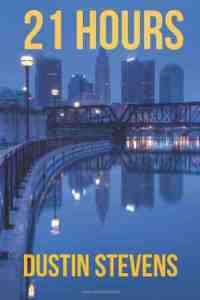 provides much of the detail. It is therefore simpler to set out the synopsis here rather than regurgitate it all in the writer’s (that is the reviewer’s) own words.
provides much of the detail. It is therefore simpler to set out the synopsis here rather than regurgitate it all in the writer’s (that is the reviewer’s) own words.
‘Felix “O” O’Connor is an ex-con from central Ohio that has spent the seven years since being released from prison working on a ranch in the Big Horn Mountains of Wyoming. Rarely does he venture out into the world and never does it come looking for him.
Both of those things change when his twin sister Alexa “Lex” Borden calls from Columbus, Ohio to ask for his help. Earlier that afternoon, she and her husband were both beaten unconscious and their two year old daughter abducted from their front yard. Nobody saw a thing, the police are stumped, and it is a well known statistic that if a child isn’t found in the first 48 hours, they rarely are.
O immediately drives back to Ohio and finds himself with just 21 hours to find his beloved niece before potentially losing her forever. Plunging himself into a world he’d long ago left behind, he crosses paths with criminal masterminds, human traffickers, gun runners, drug smugglers, blood-thirsty spectators and suspicious detectives all in the name of bringing her home.’
21 Hours is an easy reasonably paced action story. In many ways it is heartrending: although a fictional tale, it portrays a realty which is horrible to imagine. It reminds the reader that such things not only go on but appear to be on the increase i.e. ‘human trafficking’. But this is not the place to discuss such matters. The story is consequently, in part, an emotionally human one.
The protagonist fulfils the role of ‘hero’ well. He undergoes no end of physical hardships, his survival of which sometimes boarders on the unbelievable. But after all that is the nature of ‘heroes’.
The pace is just right, maintaining the reader’s interest; the desire to know what is going to happen next, and ultimately, is maintained throughout. The scenarios are varied and the twists and turns often unexpected. The book could easily be adapted into a good television drama/film.
This is an engaging tale that falls within the general reading category. I award it three stars (3*). That is not to decry the quality. Readers of my reviews will understand my stance on review ratings i.e. that most books realistically fall within the three-star bracket; see here for further information.
The book is available in several formats including paperback (standard and large print), e-book, audio book, MP3 Format, etc.
N.B. There are a couple of slightly different covers depending upon where you are looking.





